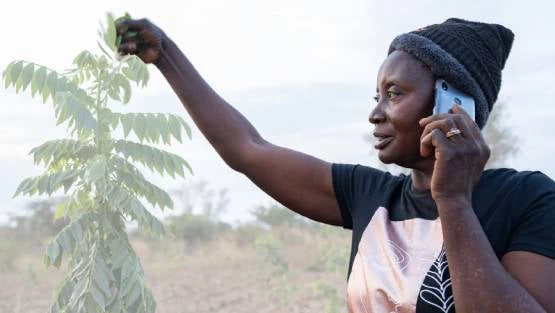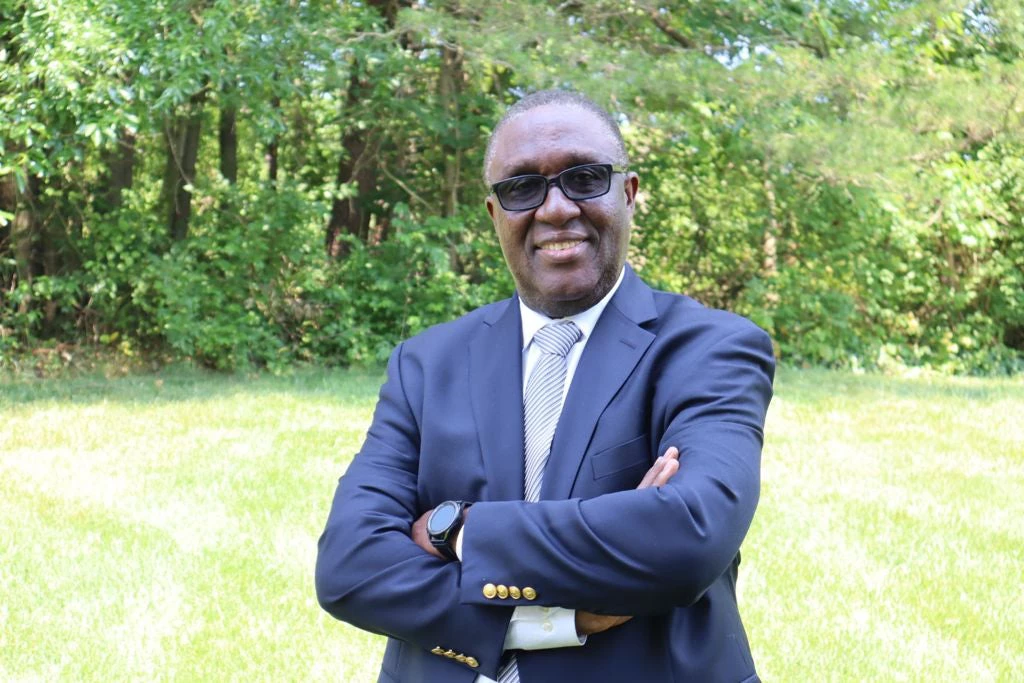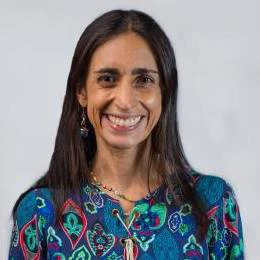 Esther Zulu is a farmer, livestock keeper, and community leader from Nyimba District in Eastern Zambia.
Esther Zulu is a farmer, livestock keeper, and community leader from Nyimba District in Eastern Zambia.
Nowhere does the challenge of climate change manifest more acutely and urgently than in African agriculture.
“Climate change is real and threatens crop and livestock systems, impacting agricultural businesses and undermining livelihoods,” says Esther Zulu, a farmer and community leader from Zambia’s Nyimba District.
Around 250 million small-scale African farmers, who operate on plots smaller than one hectare, play a crucial role in sustaining the continent's food supply by producing approximately 70 percent of it. However, with the African population projected to reach 2.5 billion by 2050, there is a pressing need to enhance their capacity to produce nutritious food and meet the growing demands. It’s critical for Africa’s broader socioeconomic development that agriculture can adapt and become more resilient under climate change.
This is a strategic priority for African governments, the continent’s regional organizations and the African Union.
Science and innovation in agriculture must be brought to the forefront of Africa’s development agenda as a public good. Similarly, digital technologies have a crucial role to play in addressing the limitations of existing extension services and meeting the evolving needs of farmers. These technologies offer valuable solutions to enhance labor and land productivity and provide real-time monitoring of climate risks, enabling proactive measures for building resilience.
But to date, too little has been achieved in realizing the full potential of Africa’s National Agricultural Research Systems, who bring together public and private research organizations who often lead research in agriculture for development.
With a 2030 strategy focused on advancing the transformation of food, land, and water systems in a climate crisis, CGIAR already plays a vital role in strengthening the agriculture research architecture in Africa.
But we know more can be done to "connect-the-dots" that link science, policy, and action. We need to move faster in getting CGIAR innovations out of labs and into fields, in the hands of farmers.
A new vision for scaling CGIAR innovation
The World Bank Group is actively exploring innovative approaches to enhance its support for CGIAR and its partners, aiming to facilitate the implementation of scientifically proven and validated innovations on a larger and more ambitious scale.
Traditionally, the funding for fostering collaboration between CGIAR centers has primarily relied on contributions from international donors, whereas Africa's regional and national programs have often been financed through the budgets of African governments.
But in 2019, following the United Nations Climate Action Summit, the World Bank Group approved $60 million for Accelerating Impacts of CGIAR Climate Research for Africa (AICCRA) through its International Development Association (IDA).
The ambition was to catalyze stronger ties between CGIAR scientists and researchers with African food producers, policymakers, private sector leaders, community champions, media, and other stakeholders critical to the transformation of African agriculture.
And so far, it’s working.
“Accelerating the rollout and scaling of what we already know to work well to bolster food security must be our priority,” says Dr. Abdou Tenkouano, Director of the West and Central African Council for Agricultural Research and Development (CORAF), one of many national, regional, and continental partners in Africa supported in the AICCRA project.
It’s reached nearly three million farmers so far, and has shown how to work with an array of partners to scale "climate-smart" agriculture, utilizing the technologies, tools, and training (and even TV shows) needed to scale innovation.
In Mali, for example, more than 100,000 rice farmers improved yields (up 0.9 tons per hectare) and profits (up USD 320 per hectare) and now apply nutrients more efficiently. This is thanks to a bundle of short-duration rice varieties, services for mechanized farming and an Android app called RiceAdvice which provides farm-specific, locally relevant climate information to the farmers.
Through training programs delivered on a regional scale, AICCRA has expanded access to (and the use of) a state-of-the art seasonal weather forecasting system known as “NextGen” to 17 countries and the regional climate centers that cover West Africa and East Africa, aligning to AICCRA’s ambition of expanding—for all farmers—to agriculture advisory services that are based on high-quality climate information.
AICCRA has partnered with 16 African universities to include climate-smart agriculture and climate information services like NextGen into the content of their curricula, ensuring that—once scaled—these innovations are sustainable and even inspire a new generation of climate forecasters.
AICCRA’s approach solves what many have argued is a "missing middle" between science, technology, and innovation on one hand, and viable and sustainable climate on the other, especially when delivered on a large scale where such action must navigate complex economic and social challenges.
AICCRA has made important progress in forging relationships of trust and collaboration public and private sectors—and crucially farming communities too—enabling CGIAR scientific resources to be used in policy and practice.
It strengthens the scientific foundations which guide investments by African governments in adapting to climate change, meanwhile setting out a blueprint for CGIAR engagement with African partners as it undertakes an ambitious transformation.
And with hopes high for a new "Global Goal on Adaptation" to be agreed by the global community this year, AICCRA also offers lessons that go can go far beyond Africa.
Publications and Feature Stories:
Needed: A Climate-Smart Food System That Can Feed 10 Billion
A Roadmap for Building the Digital Future of Food and Agriculture
Beyond the Pandemic: Harnessing the Digital Revolution to Set Food Systems on a Better
Future of Food: Harnessing Digital Technologies to Improve Food System Outcomes
Blogs:
Investing in data and innovation ecosystem to transform Indonesia’s agriculture
How Uganda’s tech-savvy ‘Generation Z’ is transforming its agriculture
Harvesting prosperity through innovation and technology in agriculture
More Related Links:





Join the Conversation